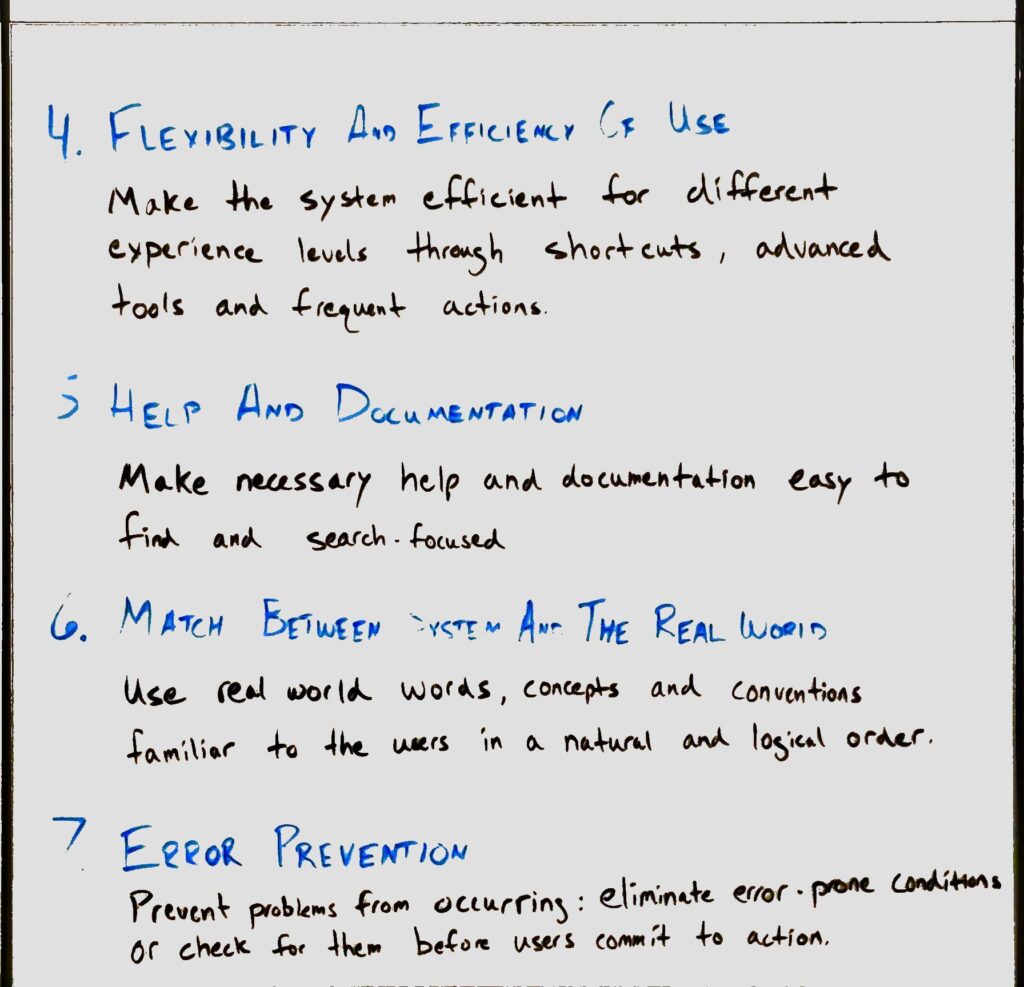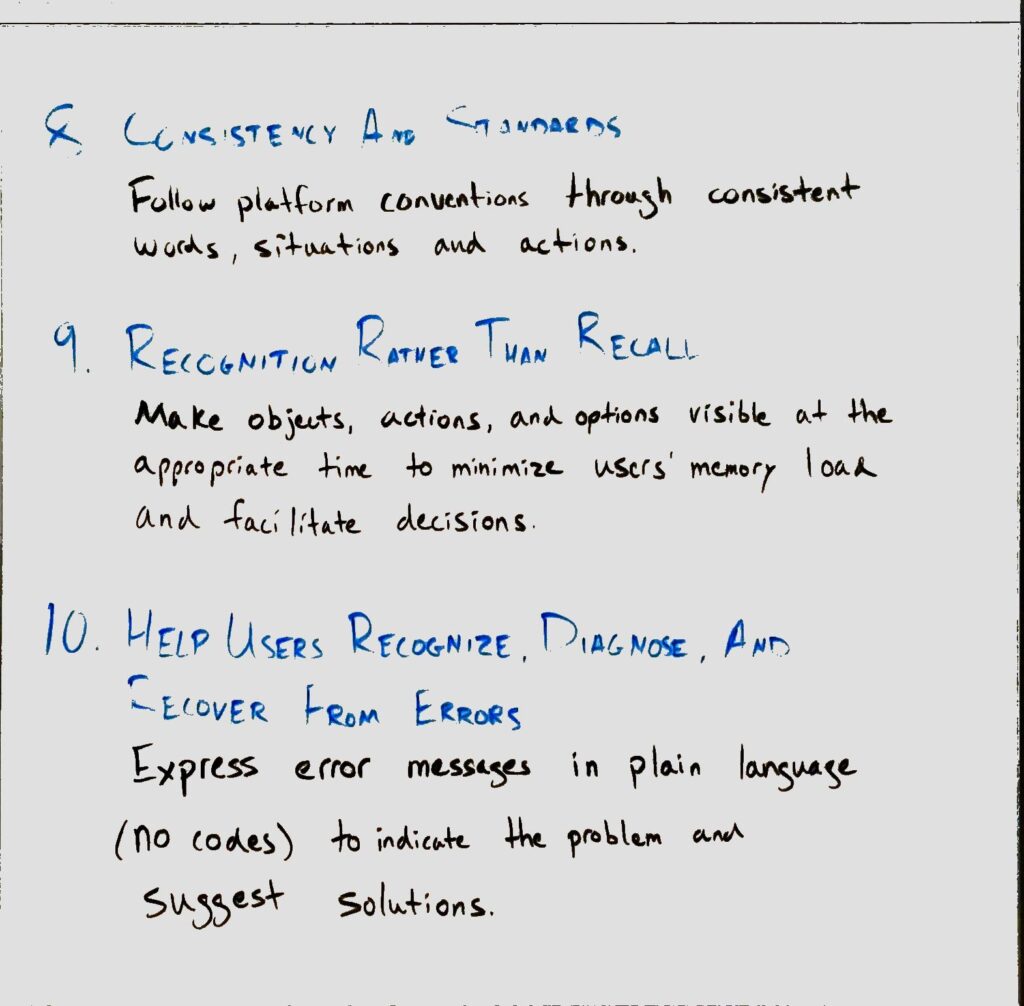There are a few useful notes on software usability / Human Computer Interaction (HCI), written on hallway the whiteboards in the Century Link St. Louis office that I feel provide a good summary of the topic. These reminded me of the HCI class I took with Bill White.


Elements of User Centered Design
- P: Personas
- UA: User Analytics
- UT: Usability Testing
- CI: Contextual Inquiry (Context by user)
- ID: Interactive Design
- HE: Heuristic Analysis (Best Practice Review)
- PT: Prototype Testing
- CA: Competitive Analysis
- IA: Information Architecture
- VD: Visual Design
Usability: The effectiveness, efficiency and satisfaction with with specified users achieve specified goals in particular environments.



10 Usability Best Practices
- Visibility of System Status: Give users appropriate feedback about what is going on.
- User Control and Freedom: Support undo, redo and exit points to help users leave an unwanted state caused by mistakes.
- Aesthetic And Minimalist Design: Don’t show irrelevant or rarely needed information since every extra element diminishes the relevance of the others.
- Flexibility and Efficiency of Use: Make the system efficient for different experience levels through shortcuts, advanced tools and frequent actions.
- Help and Documentation: Make necessary help and documentation easy to find and search focused.
- Match Between System and the Real World: Use real world words, concepts and conventions familiar to the users in a natural and logical order.
- Error Prevention: Prevent problems from occurring: eliminate error prone conditions or check for them before users commit to action.
- Consistency and Standards: Follow platform conventions through consistent words, situations and actions.
- Recognition Rather than Recall: Make objects, actions, and options visible at the appropriate time to minimize users memory load and facilitate decisions.
- Help Users Recognize, Diagnose, and Recover from Errors: Express error messages in plain language (no codes) to indicate the problem and suggest solutions.
Leave a Reply